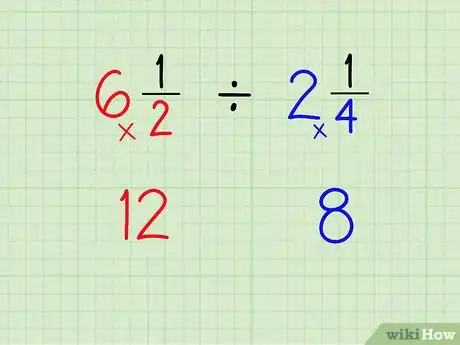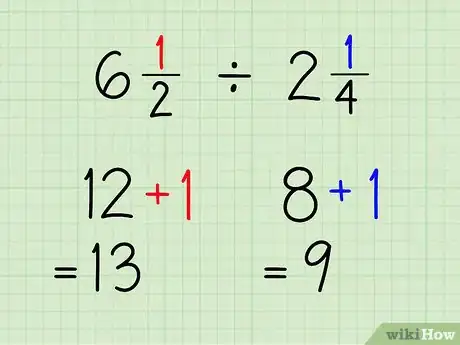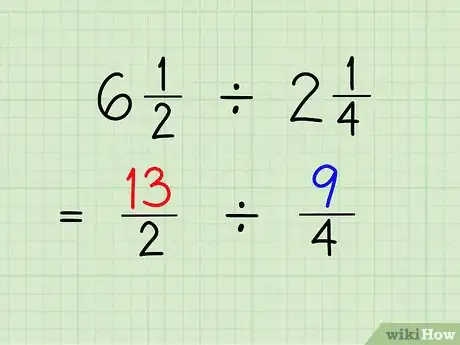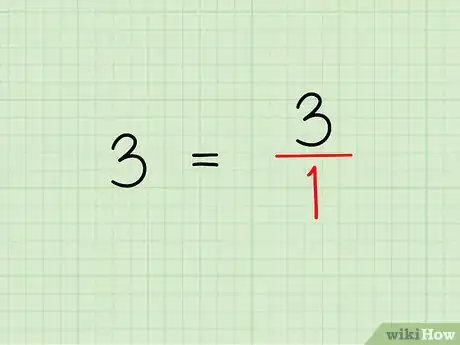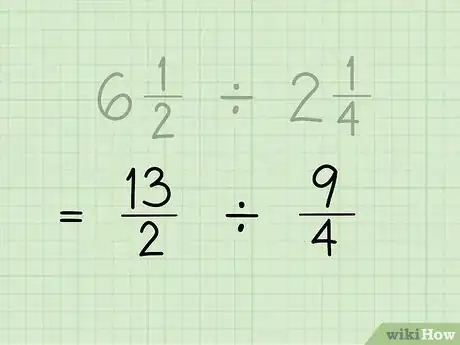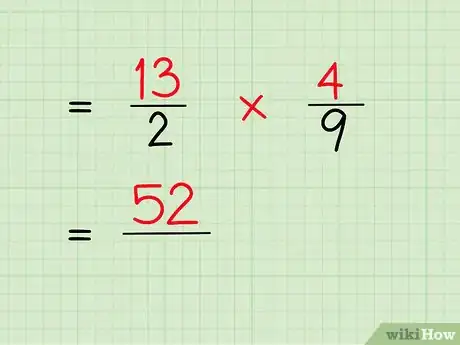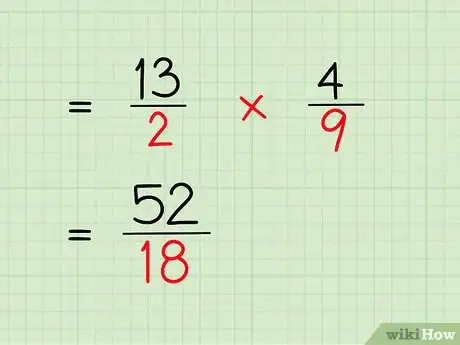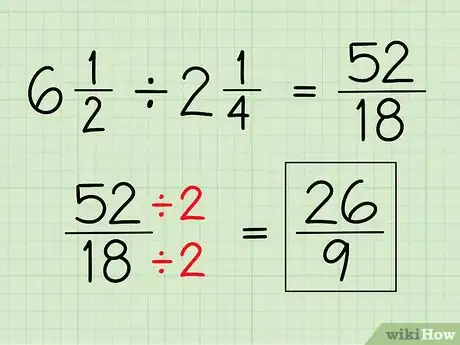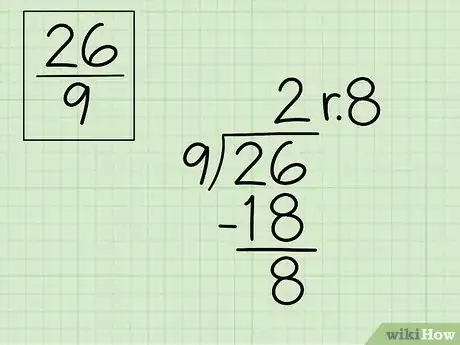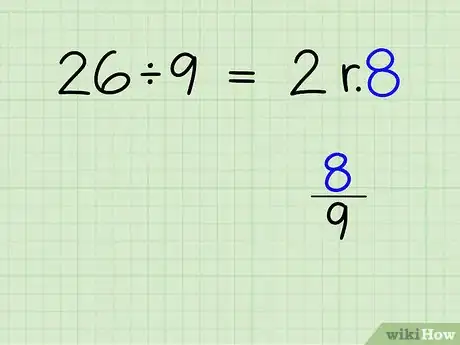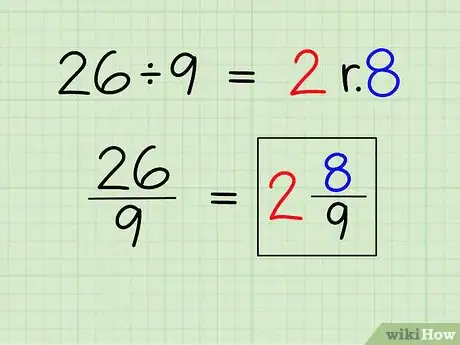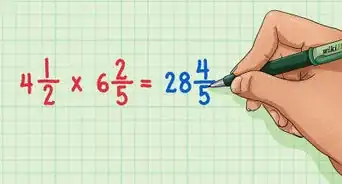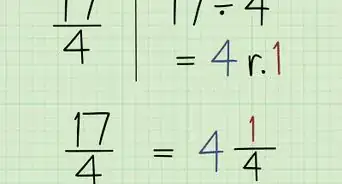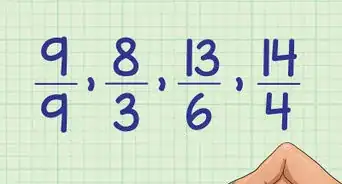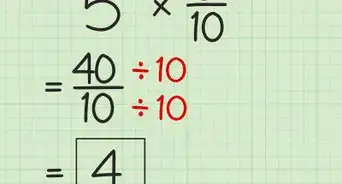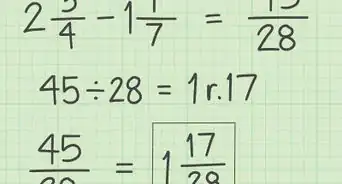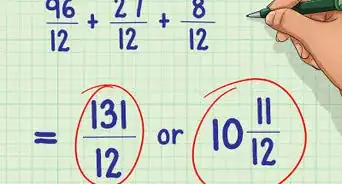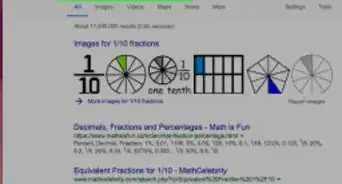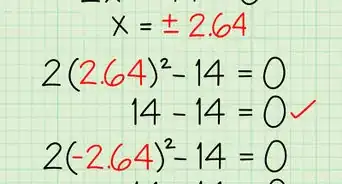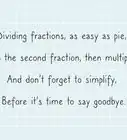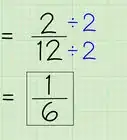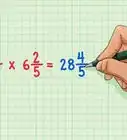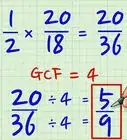This article was co-authored by David Jia. David Jia is an Academic Tutor and the Founder of LA Math Tutoring, a private tutoring company based in Los Angeles, California. With over 10 years of teaching experience, David works with students of all ages and grades in various subjects, as well as college admissions counseling and test preparation for the SAT, ACT, ISEE, and more. After attaining a perfect 800 math score and a 690 English score on the SAT, David was awarded the Dickinson Scholarship from the University of Miami, where he graduated with a Bachelor’s degree in Business Administration. Additionally, David has worked as an instructor for online videos for textbook companies such as Larson Texts, Big Ideas Learning, and Big Ideas Math.
There are 8 references cited in this article, which can be found at the bottom of the page.
This article has been viewed 514,250 times.
A mixed number, or mixed fraction, is a number that combines a whole number and a fraction. It is possible to divide mixed numbers; however, doing so requires converting them to improper fractions first. Once the mixed numbers are converted, you can divide as you would divide any other fractions.
Steps
Converting Mixed Numbers to Improper Fractions
-
1Multiply the whole number by the denominator of its combined fraction.[1] Do this for both mixed numbers. Set these products aside. They are only part of your new numerator.
- For example, if you want to calculate , you would multiply and .
-
2Add the numerator to the product.[2] Do this for both mixed numbers. This sum will be the numerator of your improper fraction.
- For example, and .
Advertisement -
3Place the sum over the original denominator.[3] Complete this step for both fractions, making sure you use the correct denominators. These are your improper fractions that you will use to complete the division.
- For example, becomes and becomes .
-
4Convert whole numbers to fractions. If you are working with any whole numbers, you need to convert them to fractions. To do this, turn the number into the numerator of a fraction. The denominator will be 1.[4]
- For example, .
Dividing Improper Fractions
-
1Write the new division problem. Use the improper fractions you found by completing the calculations in Part 1.
- For example, .
-
2Take the reciprocal of the second fraction.[5] To find a reciprocal of a fraction, you need to “flip” it, so that the numerator becomes the denominator, and the denominator becomes the numerator.[6] Then, change the problem to a multiplication problem.[7] [8]
- For example, if you take the reciprocal of , it becomes . So becomes
-
3
-
4
-
5Simplify your answer, if possible. To simplify, or reduce, a fraction, you need to find the greatest factor (besides 1) that is common to the numerator and the denominator. Then, divide the numerator and denominator by that factor. For more information on this process, read Reduce Fractions.
- For example, and are both divisible by .
So,
- For example, and are both divisible by .
Converting Improper Fractions Back Into Mixed Numbers
-
1Divide the numerator by the denominator. If there is no remainder, then your answer is a whole number rather than a mixed number, and you need not do anything further. Likely, though, you will have a remainder. Set this aside for now. The quotient you found when Dividing the numerator by the denominator will be the whole number of your mixed number.[13]
- For example, with a remainder of . Thus, the whole number of your mixed number will be 2.
-
2Turn the remainder into the numerator of your fraction. Place this numerator over the original denominator. This will give you the fraction of your mixed number.
- For example, if your original denominator is and your remainder is , the fraction of your mixed number is .
-
3Combine the whole number and the fraction. This gives you the final answer to your original division problem.
Community Q&A
-
QuestionHow do I calculate 2 5/7 divided by 3 1/2?
 DonaganTop AnswererChange both mixed numbers to improper fractions. Invert the second improper fraction, then multiply it by the first fraction to get the answer. Reduce it if possible, and convert it to a mixed number if desired.
DonaganTop AnswererChange both mixed numbers to improper fractions. Invert the second improper fraction, then multiply it by the first fraction to get the answer. Reduce it if possible, and convert it to a mixed number if desired. -
QuestionTo find the reciprocal, I flip the second fraction. What if I have fraction divided by fraction divided by fraction? Would I flip the last fraction, or the second one?
 DonaganTop AnswererFlip both the second and third fractions.
DonaganTop AnswererFlip both the second and third fractions. -
QuestionWhy do you flip the fractions and then multiply in Part 2, step 2?
 Community AnswerAny fraction multiplied by its reciprocal is equal to 1. For example, 5/10 x 10/5 = 50/50 = 1. When you divide by a fraction, you want to cancel the second fraction by changing it to a 1. So, to do this, you have to multiply it by its reciprocal (or flip it). But, if you're going to multiply the second fraction by its reciprocal, you also have to multiply the other number by its reciprocal. So when you "flip and multiply" you are really cancelling out the second fraction, which leaves you with just multiplying the first fraction by the second fraction's reciprocal.
Community AnswerAny fraction multiplied by its reciprocal is equal to 1. For example, 5/10 x 10/5 = 50/50 = 1. When you divide by a fraction, you want to cancel the second fraction by changing it to a 1. So, to do this, you have to multiply it by its reciprocal (or flip it). But, if you're going to multiply the second fraction by its reciprocal, you also have to multiply the other number by its reciprocal. So when you "flip and multiply" you are really cancelling out the second fraction, which leaves you with just multiplying the first fraction by the second fraction's reciprocal.
References
- ↑ http://www.purplemath.com/modules/fraction2.htm
- ↑ https://www.cuemath.com/numbers/mixed-number-to-improper-fraction/
- ↑ http://www.virtualnerd.com/middle-math/multiplying-dividing-fractions/mixed-number-divide/practice-divide-mixed-numbers
- ↑ https://learnzillion.com/lesson_plans/8304-express-whole-numbers-as-fractions
- ↑ https://www.cuemath.com/numbers/improper-fraction-to-mixed-number/
- ↑ https://www.mathsisfun.com/reciprocal.html
- ↑ http://www.virtualnerd.com/middle-math/multiplying-dividing-fractions/mixed-number-divide/practice-divide-mixed-numbers
- ↑ David Jia. Academic Tutor. Expert Interview. 23 February 2021.
- ↑ http://www.virtualnerd.com/middle-math/multiplying-dividing-fractions/mixed-number-divide/practice-divide-mixed-numbers
- ↑ David Jia. Academic Tutor. Expert Interview. 23 February 2021.
- ↑ http://www.virtualnerd.com/middle-math/multiplying-dividing-fractions/mixed-number-divide/practice-divide-mixed-numbers
- ↑ David Jia. Academic Tutor. Expert Interview. 23 February 2021.
- ↑ https://www.mathsisfun.com/improper-fractions.html
About This Article
The easiest way to divide mixed fractions is to convert them into improper fractions first. Start by multiplying the whole number in each mixed fraction by its denominator. For example, if one of the fractions is 6 ½, multiply 6 x 2 to get 12. Then, add the product to the numerator. In this example, 12 + 1 = 13. This will become the new numerator of your fraction, giving you the improper fraction 13/2. Once you’ve converted all the mixed fractions into improper fractions, you can divide them. Let’s say you have to solve the problem 6 ½ ÷ 2 ¼. Written as improper fractions, this would be 13/2 ÷ 9/4. To do the division problem, find the reciprocal of the divisor by flipping the fraction over. Then, multiply the two fractions together. So, in our example, 13/2 ÷ 9/4 becomes 13/2 x 4/9. Now all you need to do is multiply the numerators and denominators of the fractions together. 13 x 4 = 52 and 2 x 9 = 18, so 13/2 ÷ 9/4 = 52/18. If you can, simplify your answer by dividing the numerator and denominator of the fraction by their greatest common factor. 52 and 18 both share the factor 2, so you can simplify the fraction to 26/9. Now, convert the fraction back to a mixed number by dividing the numerator by the denominator. The quotient is the whole number, while the remainder is the new numerator. 26 ÷ 9 = 2 with a remainder of 8. So, 26/9 becomes the mixed fraction 2 and eight ninths. If you want to learn how to convert your improper fractions back to mixed numbers, keep reading the article!
